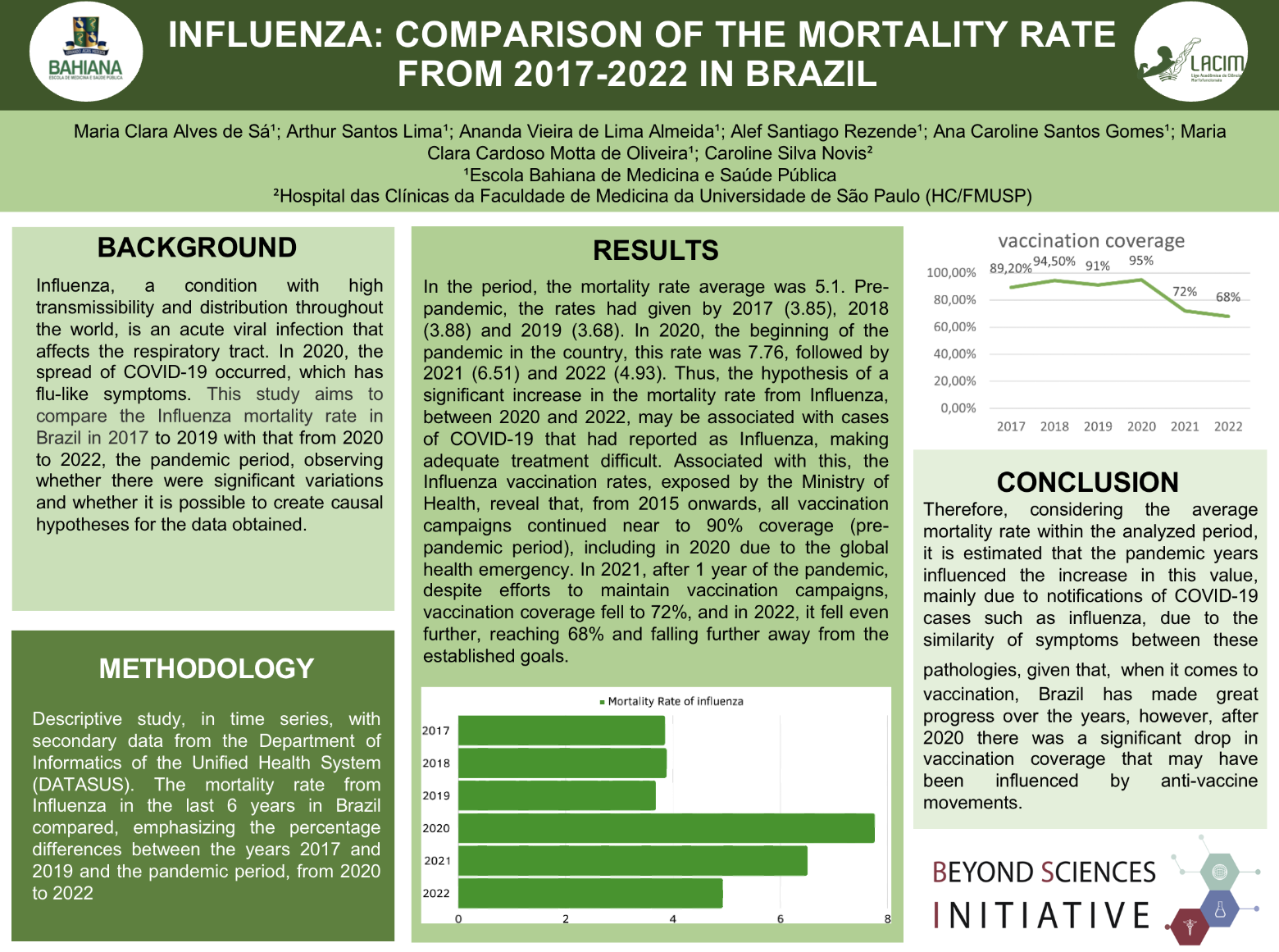Maria Clara Sá
Conference 2024 Poster
Poster Title
Influenza: Comparison of the Mortality Rate from 2017 – 2022 in Brazil
Authors and Affiliations
Maria Clara Alves de Sá1, Arthur Santos Lima1, Ananda Vieira de Lima Almeida1, Maria Clara Cardoso Motta de Oliveira1, Rafael Carneiro de Lélis1, Caroline Silva Novis2
1. Escola Bahiana de Medicina e Saúde Pública (EBMSP)
2.Hospital das Clínicas da Faculdade de Medicina da Universidade de São Paulo (HC/FMUSP)
Abstract
Background
Influenza, a condition with high transmissibility and distribution throughout the world, is an acute viral infection that affects the respiratory tract. In 2020, the spread of COVID-19 occurred, which has flu-like symptoms. This study aims to compare the Influenza mortality rate in Brazil in 2017 to 2019 with that from 2020 to 2022, the pandemic period, observing whether there were significant variations and whether it is possible to create causal hypotheses for the data obtained.
Methods
Descriptive study, in time series, with secondary data from the Department of Informatics of the Unified Health System (DATASUS). The mortality rate from Influenza in the last 6 years in Brazil compared, emphasizing the percentage differences between the years 2017 and 2019 and the pandemic period, from 2020 to 2022.
Results
In the period, the mortality rate average was 5.1. Pre-pandemic, the rates had given by 2017 (3.85), 2018 (3.88) and 2019 (3.68). In 2020, the beginning of the pandemic in the country, this rate was 7.76, followed by 2021 (6.51) and 2022 (4.93). Thus, the hypothesis of a significant increase in the mortality rate from Influenza, between 2020 and 2022, may be associated with cases of COVID-19 that had reported as Influenza, making adequate treatment difficult. Associated with this, the Influenza vaccination rates, exposed by the Ministry of Health, reveal that, from 2015 onwards, all vaccination campaigns continued at 90% coverage (pre-pandemic period), including in 2020 due to the global health emergency. In 2021, after 1 year of the pandemic, vaccination continued reaching 90%, highlighting the health efforts to maintain vaccination campaigns even during the pandemic. Finally, 2022 had a lot of subsidies to guarantee vaccination coverage for all priority groups, reaching the target.
Conclusions
Therefore, considering the average mortality rate within the analyzed period, it is estimated that the pandemic years influenced the increase in this value, mainly due to notifications of COVID-19 cases such as influenza, due to the similarity of symptoms between these pathologies, given that, when it comes to vaccination, Brazil has broad coverage, even in crises, further corroborating that underreporting is the main factor.


Leave A Comment